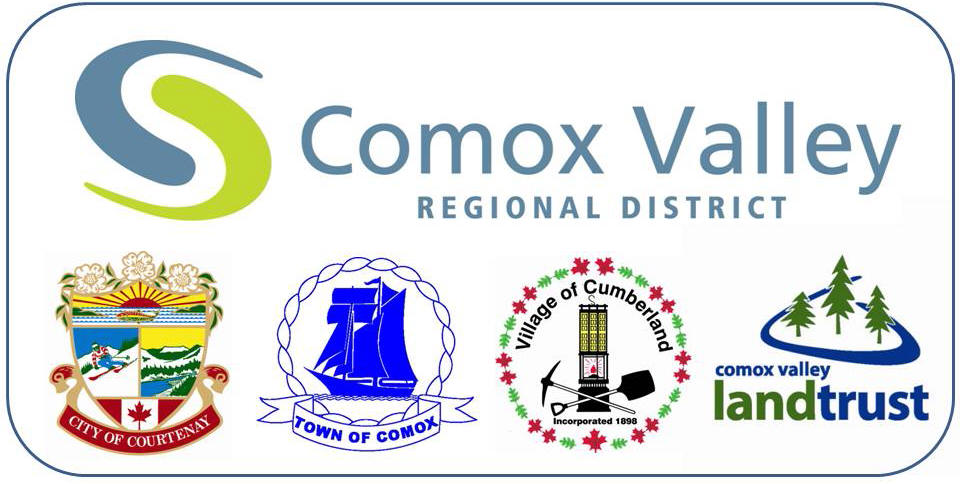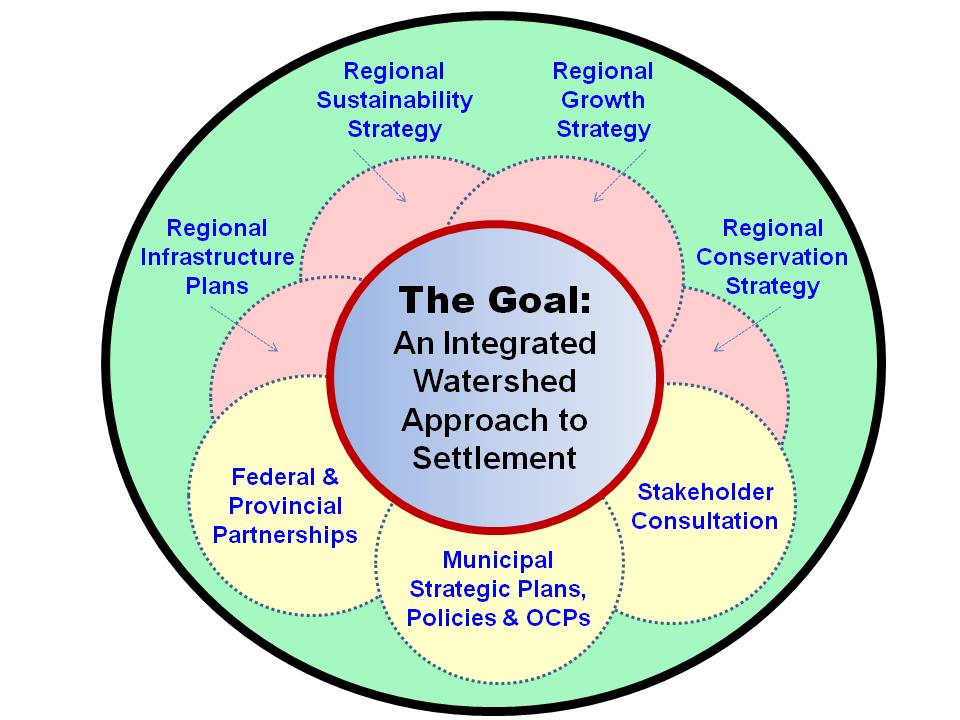GETTING AHEAD OF THE WAVE: Story #2 in the ‘curriculum preview series’ released program details for 2009 Vancouver Island Learning Lunch Seminar Series
Note to Readers:
The article below is general in nature and complements News Release #2 – CAVI releases program details for 2009 Vancouver Island Learning Lunch Seminar Series. The objective of the news release was to broaden awareness on Vancouver Island that the 2009 Series is a provincially relevant initiative. Because the 2009 Series is open to local governments outside the Comox Valley, this provides an opportunity for cross-fertilization of experience related to implementation of regional strategies and plans. The Series theme is:

The article elaborates on what the Comox Valley Organizing Team means by the mantra “Getting Ahead of the Wave”, describes how the 2009 Series is in alignment with and will help advance provincial goals, and begins the process of explaining how the Comox Valley team envisions breaking down silos and aligning regional efforts via “An Integrated Watershed Approach to Settlement”.
Because seminar design is a work-in-progress, the article captures the thinking of the Comox Valley organizing team as of late July 2009. The destination is clear; the details will evolve.
Dates, Start/Finish Times, Venue and Registration
The Comox Valley Regional District is the host local government for the 2009 Vancouver Island Learning Lunch Seminar Series. The 2009 Series is open to any Vancouver Island local government and will comprise three learning events held in Courtenay (venue to be announced). Tentative dates are September 25, November 6 and November 27.
The meet-and-greet for each Learning Lunch Seminar will start at 10:30am. Each seminar will conclude at 3:00pm. There will be a small registration fee to cover the cost of lunch.
Convening for Action on Vancouver Island
The Province’s Living Water Smart, BC’s Water Plan and Green Communities Initiative provide a frameworkfor convening for action on Vancouver Island; and the following challenge statement provides context for a ‘regional team approach’:
“Getting Ahead of the Wave to achieve Settlement in Balance with Ecology in the Comox Valley”
Local governments in the Comox Valley are convening for action around this paradigm: Water is the finite resource; however, management of development is the control.
 “The Series theme, Getting Ahead of the Wave, defines what needs to be accomplished by the 2009 Series in building on the foundation provided by the 2008 Vancouver Island Learning Lunch Seminar Series ,” states Kevin Lagan, Director of Operational Services for the City of Courtenay, the host for the 2008 Comox Valley Series.
“The Series theme, Getting Ahead of the Wave, defines what needs to be accomplished by the 2009 Series in building on the foundation provided by the 2008 Vancouver Island Learning Lunch Seminar Series ,” states Kevin Lagan, Director of Operational Services for the City of Courtenay, the host for the 2008 Comox Valley Series.
“As we look ahead to where we want to be in 2010, we envision that the 2009 Series will provide us with the springboard to achieve integration of current Comox Valley regional initiatives in subsequent phases of collaboration. To build momentum for what we need to accomplish in 2010, the unifying theme as we evolve the regional team approach can be succinctly expressed as: what all the plans will achieve.”
Benefits of Collaboration
 “The Comox Valley is a desirable place in which to live. The resulting development activity and population growth is putting extreme pressure on our regional water resources, both in terms of protecting water supply sources and preventing rainwater runoff impacts in streams and rivers. It is therefore in the best interests of valley residents that the four local governments and the Comox Valley Land Trust collaborate to achieve an integrated watershed approach to settlement, which is the end goal of the Learning Lunch Series,” adds Michael Zbarsky, Engineering Analyst with the Comox Valley Regional District.
“The Comox Valley is a desirable place in which to live. The resulting development activity and population growth is putting extreme pressure on our regional water resources, both in terms of protecting water supply sources and preventing rainwater runoff impacts in streams and rivers. It is therefore in the best interests of valley residents that the four local governments and the Comox Valley Land Trust collaborate to achieve an integrated watershed approach to settlement, which is the end goal of the Learning Lunch Series,” adds Michael Zbarsky, Engineering Analyst with the Comox Valley Regional District.
Align Local Actions with Provincial Goals
Living Water Smart and the Green Communities Iniitiative are complementary initiatives, and together provide British Columbians with a vision of what the province can look like if local governments prepare communities for change, choose to be water smart, and strive to achieve settlement in balance with ecology – in other words, implement The New Business As Usual.
“The Province is providing communities with the tools to ensure the right development in the right place at the right time,” states Laura Tate, Manager of Vancouver Island Growth Strategies with the Ministry of Community & Rural Development, and principal author of A Guide to Green Choices.
Build a Vision, Create a Legacy
 “To get to the big picture, it starts with the smallest pieces. The ultimate goal of the Living Water Smart and Green Communities initiatives is to establish expectations that will, in turn, influence the form and function of the built environment,” continues Kim Stephens, Program Coordinator for the Water Sustainability Action Plan. “CAVI is responding to the Province’s call to action by leading, informing, educating and inspiring land and water practitioners about how to create the change needed.”
“To get to the big picture, it starts with the smallest pieces. The ultimate goal of the Living Water Smart and Green Communities initiatives is to establish expectations that will, in turn, influence the form and function of the built environment,” continues Kim Stephens, Program Coordinator for the Water Sustainability Action Plan. “CAVI is responding to the Province’s call to action by leading, informing, educating and inspiring land and water practitioners about how to create the change needed.”
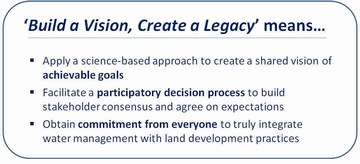
Living Water Smart
Living Water Smart, BC’s Water Plan is a visionary document that provides a framework for province-wide action. Living Water Smart comprises 45 commitments, of which two are being championed by CAVI:
- By 2012, all land and water managers will know what makes a stream healthy, and therefore be able to help land and water users factor in new approaches to securing stream health and the full range of stream benefits (p 43 Living Water Smart)
- Fifty percent of new municipal water needs will be acquired through conservation by 2020 (p 75 Living Water Smart)
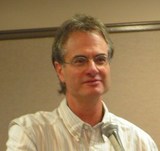 “In 2008, the pilot Vancouver Island Learning Lunch Seminar Series successfully demonstrated how to inform, educate and inspire local government practitioners about making ‘green choices’ to create liveable communities and protect stream health,” reports John Finnie, CAVI Chair (and General Manager, Water & Wastewater Services, Regional District of Nanaimo). “As an outcome of the 2009 Series, we want to get people thinking about how to make real the 2020 objective of supplying 50% of new water demand by using less. Getting there requires going well beyond the usual indoor water saving measures. It entails accelerating the current momentum for changing what we do on and to the land.”
“In 2008, the pilot Vancouver Island Learning Lunch Seminar Series successfully demonstrated how to inform, educate and inspire local government practitioners about making ‘green choices’ to create liveable communities and protect stream health,” reports John Finnie, CAVI Chair (and General Manager, Water & Wastewater Services, Regional District of Nanaimo). “As an outcome of the 2009 Series, we want to get people thinking about how to make real the 2020 objective of supplying 50% of new water demand by using less. Getting there requires going well beyond the usual indoor water saving measures. It entails accelerating the current momentum for changing what we do on and to the land.”
The Goal: An Integrated Watershed Approach to Settlement
To help stakeholders conceptualize what a vision for balance and integration would look like, the Comox Valley Organizing Team has created the graphic below. This shows the elements that must ultimately be integrated to achieve the goal of An Integrated Watershed Approach to Settlement.
Looking ahead to 2010 and beyond, the ultimate goal of the regional team approach is to maximize the intersection of the elements. This means creating linkages among the different areas of action, thereby helping to create a stronger implementation plan – that is, what all the plans will achieve.
 “To be successful, we all need to work outside our normal boundaries; and we need to proactively communicate and work with others,” states Derek Richmond, Manager of Engineering with the City of Courtenay. “We need to think of ourselves as a team, not as individuals within silos; getting there means we will have to break down boundaries through communication, collaboration, cooperation and coordination.”
“To be successful, we all need to work outside our normal boundaries; and we need to proactively communicate and work with others,” states Derek Richmond, Manager of Engineering with the City of Courtenay. “We need to think of ourselves as a team, not as individuals within silos; getting there means we will have to break down boundaries through communication, collaboration, cooperation and coordination.”
The 2009 Seminar Program
The 2009 Series comprises a set of three seminars. The learning process is cumulative: each seminar will build on the last and set the stage for the next. The scope of each is highlighted as follows:
- Understand the Dynamics of Settlement Changes:
Session #1 will start where the 2008 Series ended by posing this question: How will we implement a regional team approach in the Comox Valley, and how can this inform A Positive Settlement Strategy for Vancouver Island? This question will provide a frame of reference for achieving ‘settlement in balance with ecology’. - Regional Plans – Pathway to Water Sustainability:
Session #2 will introduce a Water OUT = Water IN framework for achieving water sustainability; coupled with a design with natureapproach to climate change adaptation. - Commitment to the Regional Team Approach:
Session #3 will introduce integration: WHO will do it, and HOW it will be done. A desired outcome is that participants will COMMIT to a regional team approach which results in implementation of An Integrated Watershed Approach to Settlement.
To learn more about the Series design, click on Getting Ahead of the Wave: Change the Way We Develop Land to Achieve Settlement in Balance with Ecology. This spells out the theme, scope and desired outcome for each of the three seminars.
From Boundaries to Commonalities:
 “Our challenge is to work around and with boundaries. Through the 2009 Learning Lunch Series, we would like to shift the paradigm from boundaries to areas of commonality,” summarizes Derek Richmond.
“Our challenge is to work around and with boundaries. Through the 2009 Learning Lunch Series, we would like to shift the paradigm from boundaries to areas of commonality,” summarizes Derek Richmond.
“The desired outcomes will include inter-departmental collaboration, inter-municipal sharing, and regional alignment. A key message is to view ‘planning’ not as land-zoning function but as a multi-faceted and iterative process that embraces the concept of truly integrated water-centric planning.”
Story of 2009 Learning Lunch Series
The series of stories published on the Water Bucket will serve as resource materials for the 2009 Learning Lunch Seminar Series. As the stories are developed, this provides the Comox Valley Organizing Team with an opportunity to focus on and formulate core concepts and key messages. In addition, having access to this material ahead of time will enable Series participants to prepare for the Town Hall sharing sessions. In this way, the Series will provide all participants with maximum value.
The complete list of stories and Water Bucket links can be viewed by clicking on Provincial pilot for a ‘regional team approach’ to achieving settlement in balance with ecology is hosted by Comox Valley Regional District.
To download a report-style, PDF version of the above story, click on Getting Ahead of the Wave to achieve Settlement in Balance with Ecology.
About CAVI
CAVI brings together those who plan and regulate land use (local government), those who build (developers), those who provide the legislative framework (the Province), those who provide research (university and college), and those who advocate conservation of resources (stewardship sector).
Designed through an inclusive and participatory process that draws on the experience of planning and engineering managers in local government, CAVI program elements are outcome-oriented.
The challenge posed by CAVI is this: Visualize what we want Vancouver Island to look like in 50 years.
The CAVI vision is to move toward water sustainability and A Positive Settlement Strategy for Vancouver Island by implementing green infrastructure policies and practices.
To learn more about CAVI, click on Visualize What We Want Vancouver Island to Look Like in 50 Years.
The New Business As Usual
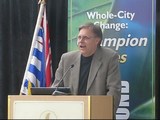 “We are using the slogan The New Business As Usual to convey the message that, for change to really occur, practices that until now have been viewed as the exception must become the norm moving forward. We have to build regulatory models and develop models of practice and expertise to support The New Business As Usual”, stated Dale Wall, Deputy Minister, at the Gaining Ground Summit in May 2008.
“We are using the slogan The New Business As Usual to convey the message that, for change to really occur, practices that until now have been viewed as the exception must become the norm moving forward. We have to build regulatory models and develop models of practice and expertise to support The New Business As Usual”, stated Dale Wall, Deputy Minister, at the Gaining Ground Summit in May 2008.
To learn more about what Dale Wall had to say, click here to view a YouTube video clip.


